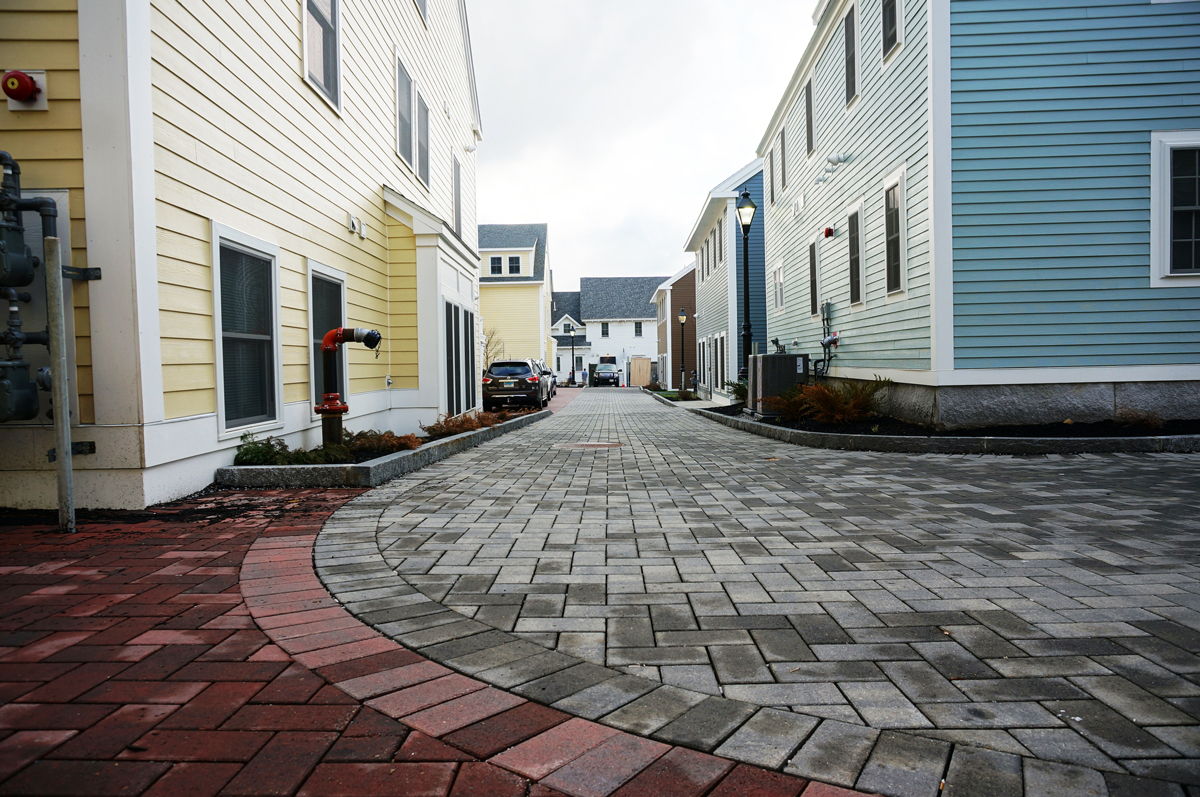.JPG&w=800px)
The Clean Water Act (CWA) is the primary federal law that regulates the quality of the nation’s water bodies. The CWA, through the National Pollutant Discharge Elimination System (NPDES) program, establishes pollution limits for anyone discharging into streams and lakes, including cities.
One of the greatest tools in the engineering toolbox when it comes to meeting the requirements of the CWA in urban stormwater environments is pervious (permeable) pavement or pavers. Just like it sounds, these surfaces are created with open pores that allow precipitation and surface runoff, to pass through the pavement to a reservoir below where it is slowly released to infiltrate into the soil below. Pervious surface applications are classified as LID (low impact development), their use is not only beneficial for drainage design, but for promoting and maintaining a healthier environment.
Case in point, the USGS conducted a side-by-side test of three different pervious surfaces to measure changes to the water quality, and the ability to infiltrate stormwater runoff from a conventional bituminous asphalt parking lot in Madison, Wisconsin. During the 24-month monitoring period (2014-16), all three permeable pavements resulted in statistically significant reductions in the cumulative load of solids (total suspended solids and suspended sediment), total phosphorus, Escherichia coli (E. coli), and Enterococci. Most of the removal occurred through capture and retention in the void spaces of each permeable surface and aggregate base.
As far as application, both our civil engineers and our landscape architects will specify the pervious materials for projects depending on what type of project is being proposed, the permitting criteria, and benefits to the outcome. We will utilize the product from various vendors depending on need, application, and cost parameters. All major vendors of pervious products have slightly different qualities to their products as well as installation requirements. These specific details are included in our engineering plans to ensure that the contractor has all the detailed information needed to properly install on the site.
Pervious pavement can be individual pavers, pre-cast or cast-in-place concrete, or asphalt which are all installed with an underlying stone reservoir. There are several benefits to using the technology including reducing runoff, reduction of some pollutants, improvements to water quality, and a decreased need for salt use in cold weather.
Construction of a pervious surface includes five basic layers:
- Porous asphalt, or paver layer (top layer)
- A filter course layer (typically ½-in. crushed stone or sand)
- Reservoir course layer (typically 1.5-3in. diameter stone)
- Filtering fabric layer
- Existing soil layer (bottom layer)
As ideal as the use of pervious pavement sounds, some concerns continue to plague the use of the medium. Pervious pavement of any type needs to be maintained and this was reflected in the testing mentioned above. Without regular maintenance, debris and sediment can accumulate over time and clog the surface of the pavement. This will reduce the porosity of the medium. It is also perceived as more expensive, although based on our experience once you factor in the cost of underground piping and manholes that would be required for traditional stormwater conveyance it is comparable in cost.
.jpg)
Above: Permeable base layers

Above: Permeable asphalt on top of the stone layer
Winchester Hospital Center for Cancer Care, Winchester MA
.jpg)
Above: Permeable concrete slabs
The Washingtons, Melrose MA

Above: Permeable pavers after a heavy rain event. Zero ponding noted.
University Edge Apartments, Durham NH
References cited:
USGS Upper Midwest Science Center: Evaluating the potential benefits of permeable pavement on the quantity and quality of stormwater runoff by William Selbig, Research Hydrologist. https://www.usgs.gov/science/evaluating-potential-benefits-permeable-pavement-quantity-and-quality-stormwater-runoff?qt-science_center_objects=0#qt-science_center_objects
Hydraulic, Water-Quality, and Temperature Performance of Three Types of Permeable Pavement under High Sediment Loading Conditions Scientific Investigations Report 2018–5037. https://pubs.er.usgs.gov/publication/sir20185037
